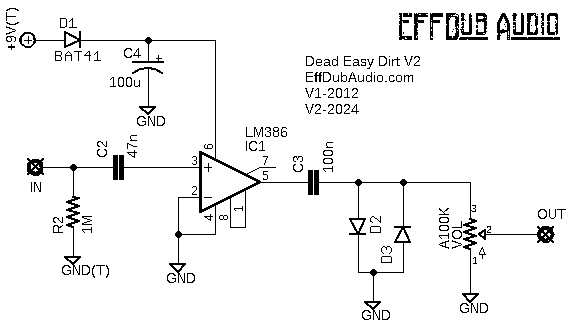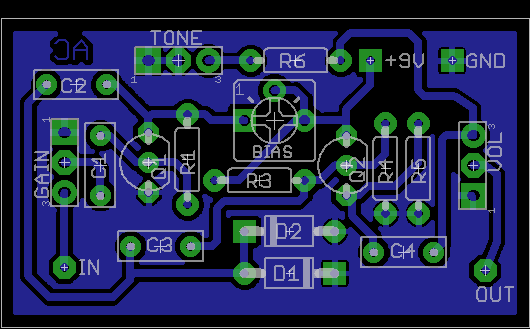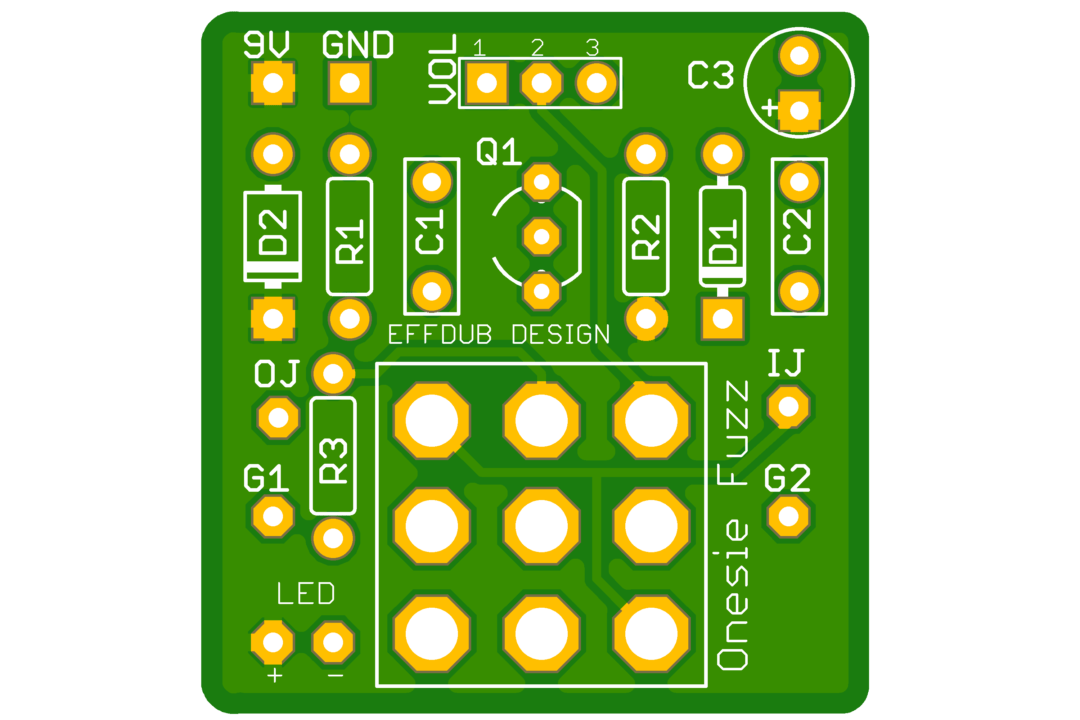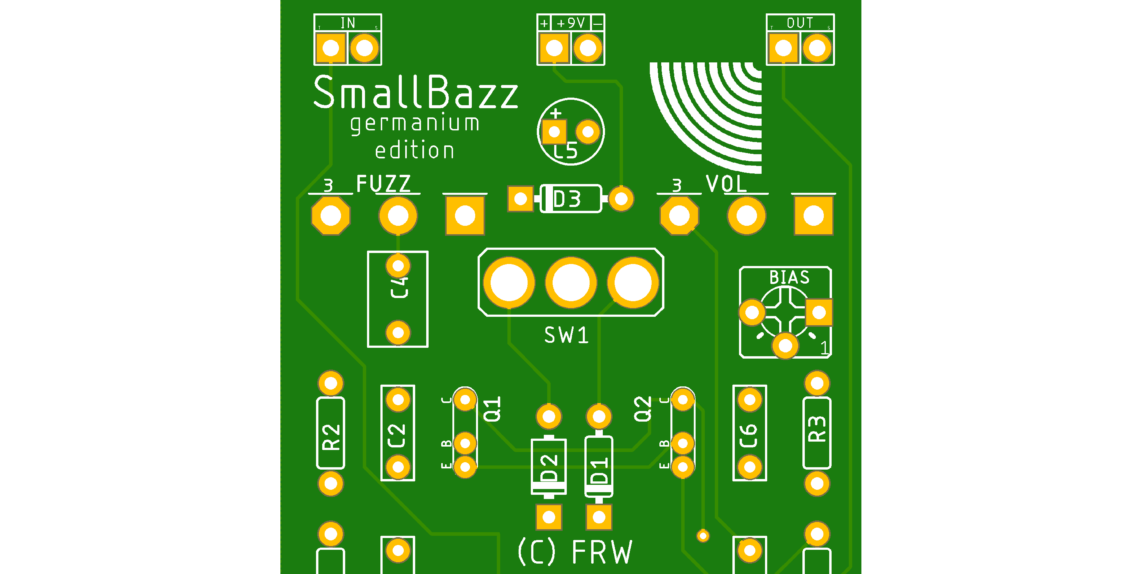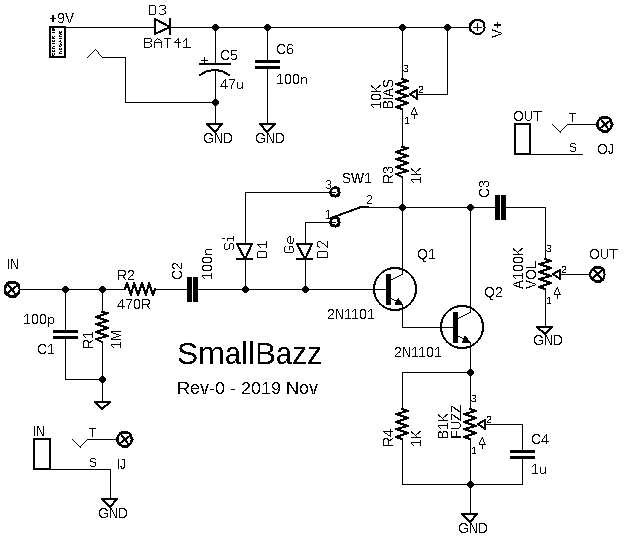The Onesie project is my contribution (one of them, anyway) to the long and glorious history of a fantastic DIY fuzz circuit known as the Bazz Fuss. It’s super simple and sounds fantastic. With just one transistor, one diode, two capacitors, one resistor, and one potentiometer, the Bazz Fuss delivers a hell of a lot of fuzzy goodness despite it’s simplistic design. It’s very difficult to get great tone out of such a small number of components, with the only other similarly efficient circuit I can think of being the Electra Distortion.
This iteration of the Bazz Fuss stays true to the original (brought to you by a fellow known as “Hemmo” and popularized by the fine folks at RunoffGroove.com), but is built on a PCB that mounts directly to a 3PDT footswitch. This avoids the necessity of precise enclosure drilling, as you can mount the pot anywhere you like and simply run leads from the switch-mounted PCB.
The layout includes pads for bypass LED and current-limiting resistor, as well as power filtering and reverse power polarity protection. It’s very easy to build, and very cheap to have PCB fabricated. It’s a DIY dream, in other words.
Build Your Own Bazz Fuss Project!
Download the Onesie File Pack, which includes schematic and PCB images, Eagle CAD files, and a bonus turret or eyelet layout image.

